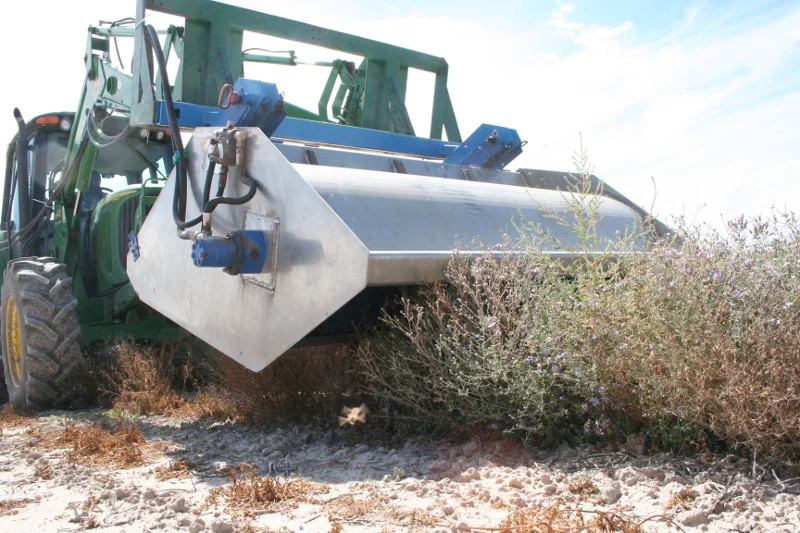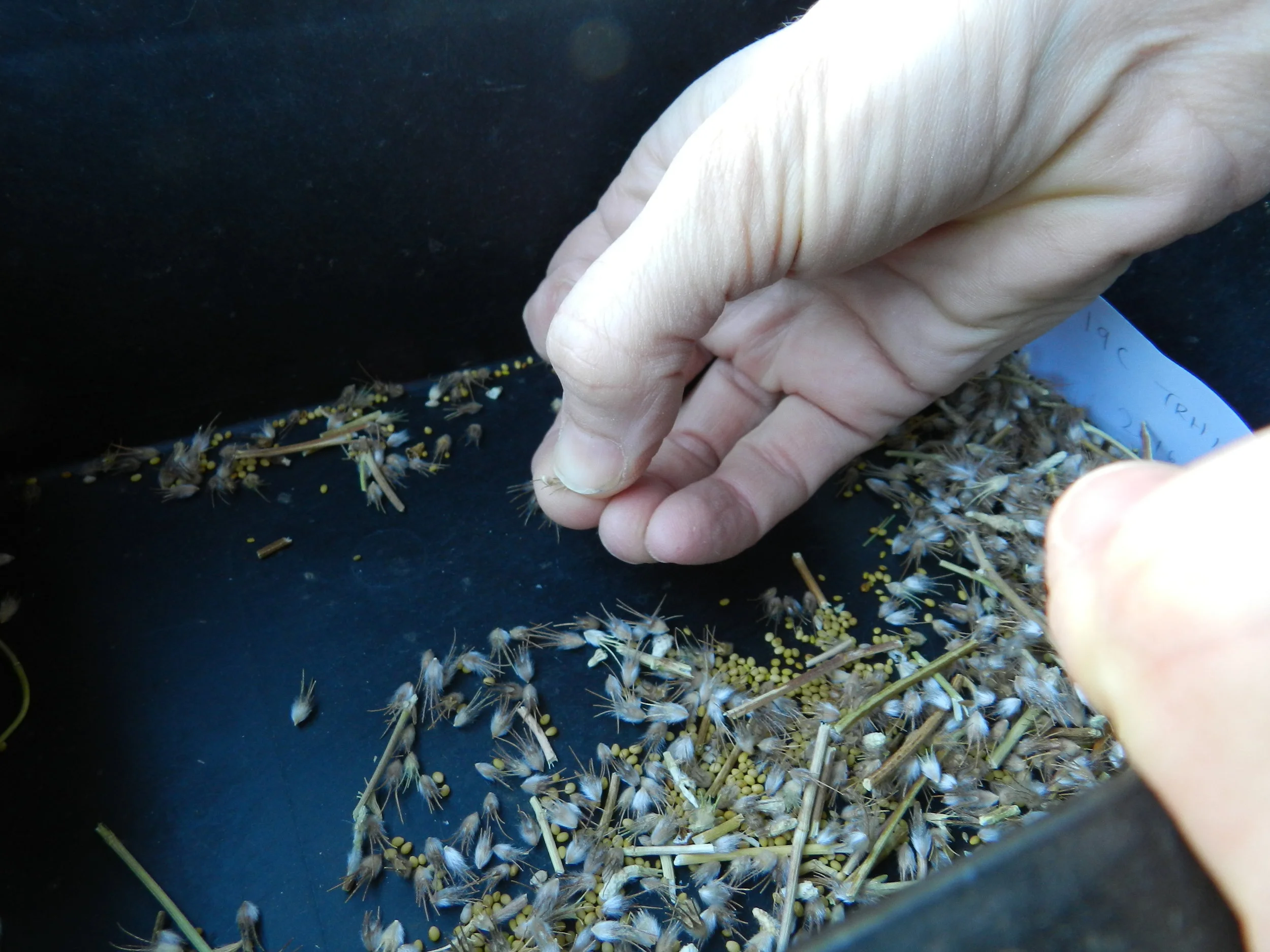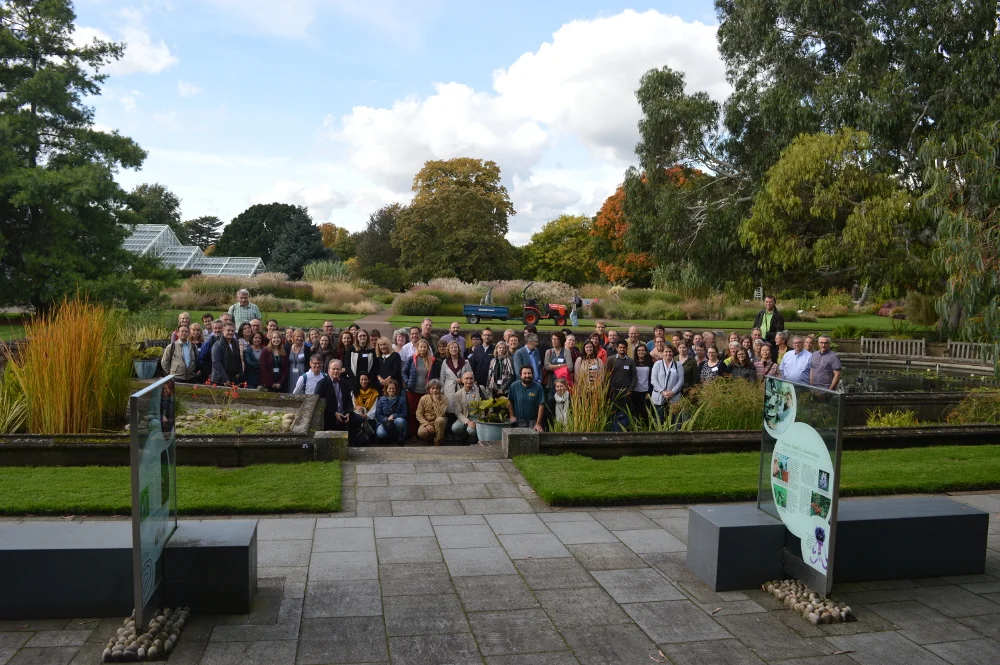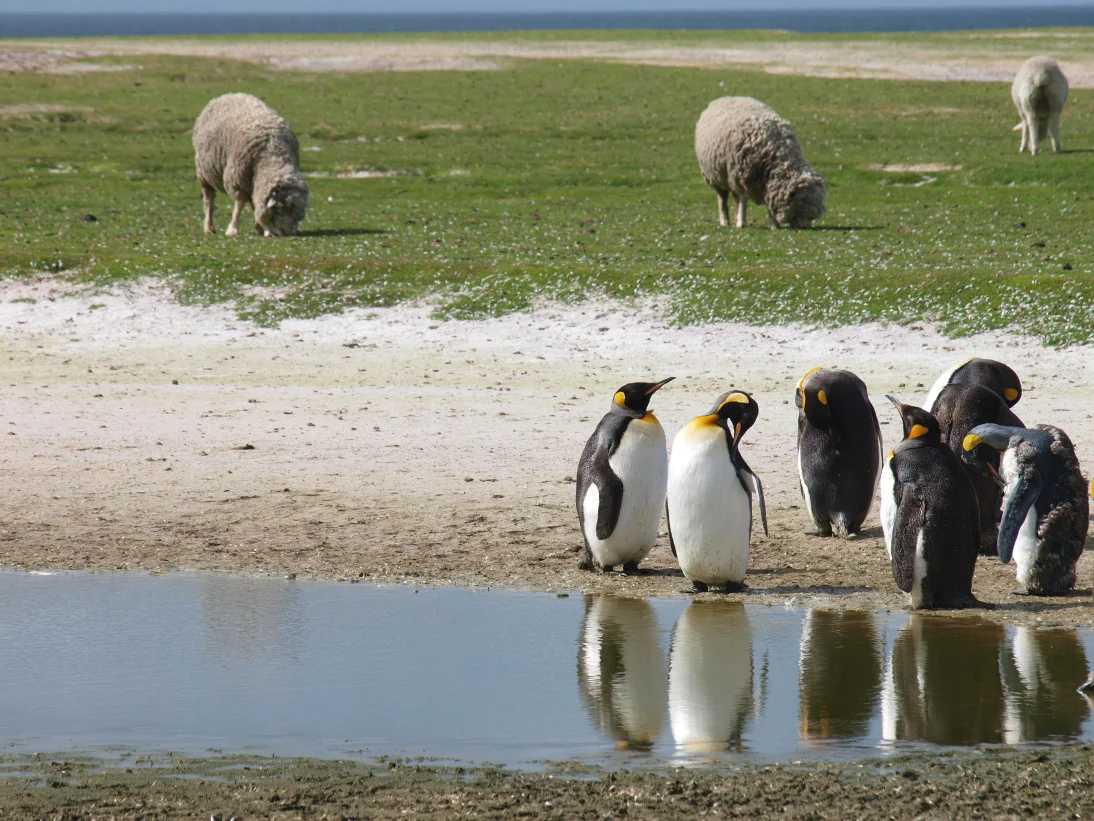Haiti, often featured in news around the world for ongoing humanitarian crises, boasts a rich natural history that is both intertwined with, and threatened by, those crises. This mountainous country has suffered from continuous landscape degradation for over 200 years. Long-term exploitation of natural resources, whether for export or to support charcoal production for household energy needs has resulted in widespread deforestation. Lack of government infrastructure coupled with uncoordinated efforts by NGOs has led to this becoming a persistent condition. The loss of forests has led to severe soil erosion on Haiti’s mountain slopes, reducing agricultural productivity and creating massive flooding and landslides. Despite the magnitude of challenges, many Haitians are organizing to improve landscape conditions through grassroots rehabilitation and restoration efforts. Hope for a better future builds as community-based projects work toward reforesting Haiti’s slopes and building more sustainable ecosystems and communities.
Collecting Light, Wind-dispersed Seed with a Modified Flail-Vac
Indeterminately maturing, wind-dispersed wildflower seeds can be difficult to effectively harvest to maximum yields using traditional equipment. We modified a Flail-Vac Seed Stripper by mounting heavy loops of chain to the front to provide agitation of the floral canopy to disarticulate seed from the flowers of Machaeranthera canescens. This allowed for multiple, non-damaging harvests that collected primarily ripe seed that was ready to shatter. We saw a 5 fold increase in seed yields compared to those obtained with a standard Flail-Vac and a significant reduction in seed processing time compared to our previous harvest experience.
Breakthrough seed meeting on Drylands of the world
The first symposium dedicated to native seeds in dryland restoration organised by INSR and the Kuwait Institute for Scientific Research (KISR) was held in November in Kuwait City. With almost 200 delegates from some of the most impressive dryland regions of the world from the Sudan to the Sahara to the Australian deserts, the three day meeting and field trip was an inspiring event as scientists and practitioners shared the latest research and technologies for saving and restoring the world’s drylands.
The Pop Test: A Quick Methods to Estimate Seed Quality
The Aberdeen Plant Materials Center uses a “pop test” to get an approximation of seed viability during the seed cleaning process by sprinkling a small number of seeds on a hot plate and counting the number that pop. If the percentage of popped seed is high enough, usually above 90%, we know the cleaning system is doing a good job of removing empty or shriveled seed. If the popped percentage is low, we can adjust the air-flow and remove more light seed.
Seed Conservation of Rare Plants in Colorado
Picture Colorado. What comes to mind? For most people, it’s the soaring, majestic peaks of the Rocky Mountains. However, the alpine ecosystem constitutes just one of Colorado’s six major vegetation zones. The state’s rich floral diversity is distributed throughout multiple systems, including shortgrass steppe, shrub steppe, pinon-juniper woodland, montane forest, subalpine forest, and alpine. Of Colorado’s 2,797 native plant species, 525 (16%) are rare, and 90 (2.6%) are rare endemics (see all rare Colorado species here). All of these taxa are at risk of decline as a result of multiple, interacting factors.
The First Characterization of the Seed Industry for Herbaceous Native Species in Europe
In Europe, grasslands are counted among the most species-rich vegetation types but also the most extensively degraded and least protected habitats. The role played by the native seed production sector is therefore crucial in providing native seed for grassland restoration
The native seed industry for herbaceous plants in Europe is a relatively young sector, with the oldest companies having about 35 years of experience. This sector has also a very uneven level of development across the continent.
The NASSTEC Conference – The First Europe-based International Conference on Native Seeds
On September 2017, the final conference of the NASSTEC (Native Seed Science, Technology and Conservation) Initial Training Network, was held at the Royal Botanic Gardens Kew (UK). NASSTEC main objectives were to train a new generation of native seed specialists in Europe and to better connect European native seed stakeholders in order to improve the native seed supply and the success in grassland restoration.
The College First Program Opens Doors to New Possibilities in Plant Conservation and Ecological Restoration
The program is based at the Chicago Botanic Garden, where students work alongside researchers and college-age mentors (who are part of Garden’s National Science Foundation’s funded Research Experience for Undergraduates program). Working with their mentors, students help to address important challenges in plant conservation and restoration. The goal of the program is to increase diversity in STEM fields, with an emphasis on a university education as a means of creating and achieving career aspirations for students, many whom are often the first in their families to attend college. The students are responsible for developing and carrying out an independent project to get hands-on experience conducting plant-based research. Experiences like these are unique and spark a deeper understanding and appreciation of the natural world, a sentiment which can sometimes seem distant in a large metropolitan area like Chicago.
Botanic Gardens and Native Seed Production
Botanic gardens play a leading role in the conservation of rare and threatened plant species around the world. Increasingly they are active in ecological restoration. Scaling up the use of seed banking facilities and the horticultural skills of botanic gardens should help to address the global shortage of native seed for ecological restoration
Collecting Native Seed in Subarctic Ontario, Canada
Mining companies have few choices. They can purchase seed from a limited number of species that are sourced from far away (>1000 km west or south). They can collect seed themselves from local wild populations. Or, they can encourage people from local communities to collect and sell native seed. Collecting seeds locally, or within seed zones and from a comparable habitat (i.e., moisture regime, soil type) poses the lowest ecological risk and leads to better survival of plantings over the long term. Mine restoration planners are unlikely to possess the local knowledge needed to find and collect desired seed. In contrast, local people may be familiar with plant abundances and their regional phenology, although they may require some training on sustainable collection practices and seed cleaning procedures. For both ecological and economic reasons, local seed collection by nearby communities should be encouraged for the restoration of current and future developments in the region.
Our research focused on the developing simple protocols that use accessible and inexpensive equipment for seed collection and processing. We have published our general protocols online along with species-specific protocols for collecting, cleaning, storing and propagating 60 species which may be useful for the rehabilitation of mined lands.
Xingu Seed Network in Brazil
The Xingu Seeds Network involves 30 organisations and 450 seed collector groups in 19 municipalities of the Xingu’s watershed in the Brazilian Amazon. These groups encompass 14 rural settlements, one extractive reserve, and 6 indigenous ethnicities of the 4 indigenous lands and 11 villages. Moreover, there is a management office based in Canarana city (Mato Groso State) and 4 seed storage houses. Over one decade, this network has facilitated the production of a substantial volume of seeds (175 tonnes) and generated about 750 thousand US dollars for 450 households.
The Native Seed Community Shining at the Global Ecological Restoration Conference in Brazil
The native seed community, was very well represented during the INSR’s first full day symposium: Seed Based Restoration: Innovations, Opportunities and Challenges. Seventeen delegates from the US, Brazil, Mexico, China, Germany, Australia, Spain, Scotland and Italy presented their global experiences on topics from seed collection and treatment, all the way to application of seed technology and seeding.
The symposium was a resounding success and introduced the INSR to scientists and practitioners, especially those from Latin America, who interacted with the network for the first time.
Falklands Conservation: Sheep Poop and Native Seeds Can Be a Successful Recipe for Restoration!
The Falkland Islands comprise of two main islands and over 700 smaller islands: our total area is 4,700 square miles - around the size of Connecticut in the USA. Our population is 3,500 people, three quarters live in the capital, Stanley and the gnarly remainder live in small settlements and isolated farms. We farm cattle and sheep: extensive sheep farming dominates with over half a million sheep at last count.
Developing and Implementing a Forest Nursery Program in Togo
Togo, West Africa has one of the highest deforestation rates both globally and on the African continent, with recent reports showing only about 5% of forests remaining in the country. Enter the Institute for Community Partnerships and Sustainable Development (or ICPSD), a non-profit based in Moscow, ID, whose mission is to empower African communities to be self-sufficient, and at the center of their own development.
Seed Conservation Knowledge Hub
Native Seed Supply & The Restoration Species Pool
Ecological restoration does not come without risk. An enormous amount of resources are spent on a practice for which we are still asking questions and trying to fully understand to achieve desirable outcomes. We have explored two key constraints and opportunities for reducing risk in a case study of over 1000 species important to ecological restoration in temperate European grasslands in a new paper; “Native Seed Supply and the Restoration Species Pool”.
Texas Native Seeds Program: Sowing Seeds of Change in the Lone Star State
Native seeds supplies can be huge catalysts for change. When non-native grass issues and their impacts on wildlife alarmed Texas landowners, they set in motion an initiative that has paid big dividends for increased appreciation of native plants and for encouraging and enabling successful restoration seedings. Read how the Texas Native Seeds Program at the Caesar Kleberg Wildlife Research Institute has cultivated and grown their collaborative efforts toward having major impacts on seed-based restoration, and native plant conservation in Texas.
Semillas Silvestres: Twenty-five Years of Native Seed Production in the Iberian Peninsula
Founded over 25 years ago in Córdoba, Spain, the native seed company Semillas Silvestres S. L. is a pioneer and leader in bringing the diversity of the Iberia flora to market and increasing the use of native plants in ecological restoration. Today our seed list is an essential resource for the drafting of any project related to Iberian diversity, whether environmental restoration, recovery of biodiversity in agro ecosystems, or for new projects for sustainable landscaping, so necessary actually in the cities.
Seed Banking in New York City and Beyond
On October 25th, 2012, Heather Liljengren, Seed Bank Coordinator for the Greenbelt Native Plant Center, found herself on Rockaway Beach, New York, making a seed collection when she came across one of the few remaining natural populations of Ammophila breviligulata (American Beachgrass) on the Rockaway Peninsula.
US Forest Service, Bend Seed Extractory
The Bend Seed Extractory (BSE), a facility of the US Forest Service, Pacific Northwest Region located in Bend, Oregon is dedicated to seed and only seed. The facility provides a variety of services to public agencies across the United States. We extract, process, test, package, and store seed for more than 3,000 different species and our seed lots vary from a few tablespoons to thousands of pounds.




















